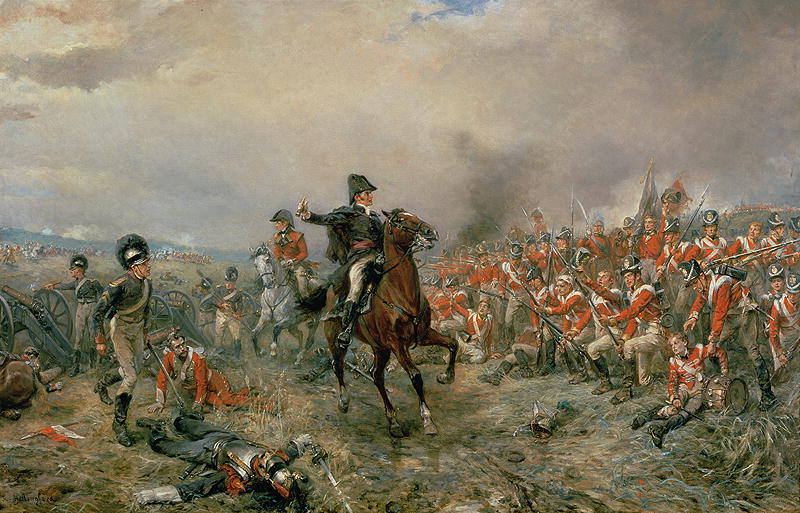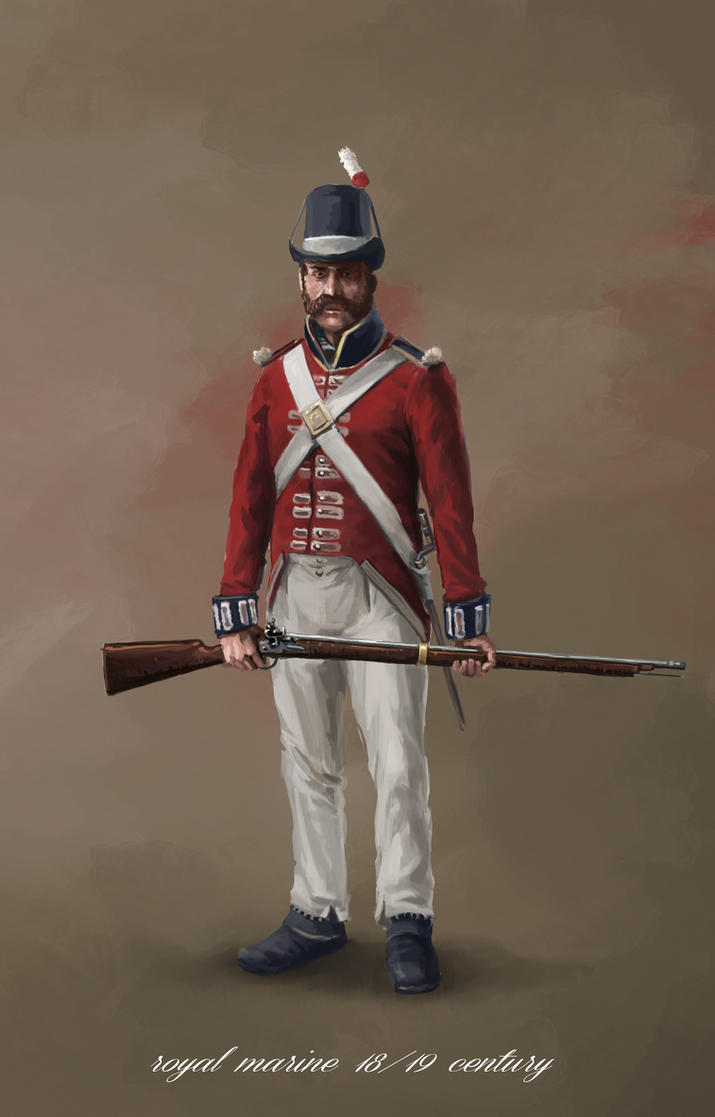"Nemo Me Impune Lacessi" 42nd (Highland) Regiment of Foot
42nd (Highland) Regiment of Foot
The 42nd Regiment of Foot was a Scottish infantry regiment in the British Army also known as the Black Watch. Originally titled Crawford's Highlanders or The Highland Regiment and numbered 43rd in the line, in 1748, on the disbanding of Oglethorpe's Regiment of Foot, they were renumbered 42nd and in 1751 formally titled the 42nd Highland Regiment of Foot. In 1881 the regiment was named The Royal Highland Regiment (The Black Watch), being officially redesignated The Black Watch (Royal Highland Regiment) in 1931. In 2006 the Black Watch became part of the Royal Regiment of Scotland.
Early HistoryAfter the Jacobite rising of 1715 the British government did not have the resources or manpower to keep a standing army in the Scottish Highlands. As a result, they were forced to keep order by recruiting men from local Highland clans that had been loyal to the Whigs. This proved to be unsuccessful in deterring crime, especially cattle rustling. Therefore, Independent Highland Companies (of what would be known as the "Black Watch") were raised as a militia in 1725 by General George Wade to keep "watch" for crime. He was commissioned to build a network of roads to help in the task. The six Independent Highland Companies were recruited from local clans, with one company coming from Clan Munro, one from Clan Fraser, one from Clan Grant and three from Clan Campbell. These companies were commonly known as Am Freiceadan Dubh, or the Black Watch, this name may well have been due to the way they dressed. Four more companies were added in 1739 to make a total of ten Independent Highland Companies.
The ten Independent Highland Companies of "Black Watch" were officially formed into the "43rd Highland Regiment of Foot", a regiment of the line in 1739. It was first mustered in 1740, at Aberfeldy, Scotland. The Colonel was John Lindsay, 20th Earl of Crawford and the Lieutenant-Colonel was Sir Robert Munro, 6th Baronet. Among the Captains were his next brother, George Munro, 1st of Culcairn (also a Captain of an Independent Company raised in 1745) and their cousin John Munro, 4th of Newmore, who was promoted Lieutenant-Colonel in 1745 (in place of Sir Robert who went on to command the 37th (North Hampshire) Regiment of Foot). The other Captains of the 43rd were George Grant, Colin Campbell of Monzie, James Colquhoun of Luss, John Campbell of Carrick, Collin Campbell of Balliemore and Dougal Campbell of Craignish.
First Action And MutinyThe regiment's earliest days were inauspicious: ordered to London in 1743 for an inspection by King George II, rumours flew that they were to be shipped to the West Indies to fight in the War of the Austrian Succession, and many left for Scotland. They were recaptured, three of the leaders shot in the Tower of London, and the remainder of the regiment shipped to Flanders.
The regiment's first full combat was the disastrous Battle of Fontenoy in May 1745, where they surprised the French with their ferocity, and greatly impressed their commander, the Duke of Cumberland. Allowed "their own way of fighting", each time they received the French fire Colonel Sir Robert Munro ordered his men to "clap to the ground" while he himself, because of his corpulence, stood alone with the colours behind him.
When the Jacobite rising of 1745 broke out, the regiment saw action at the Battle of Prestonpans in September 1745 and then returned to England in anticipation of a possible French invasion. However one company of the regiment fought for the British-Hanoverian Government under Dugald Campbell of Auchrossan at the Battle of Culloden, where they suffered no casualties, in April 1746. From 1747 to 1756 it was stationed in Ireland and was then sent to North America.
The AmericasDuring the French and Indian War, at the first battle of Ticonderoga, also known as the Battle of Carillon, the regiment lost over half of its men in the assault in July 1758.[13] At that time they were already officially recognized as a Royal regiment. The second battalion of the Black Watch was sent to the Caribbean but after the losses of Ticonderoga, the two battalions were consolidated in New York. The regiment was present at the second battle of Ticonderoga in July 1759 and the surrender of Montreal in September 1760. They were sent to the West Indies again where they saw action at Havana, Martinique and Guadeloupe.
Between 1758 and 1767 it served in America. In August 1763, the Black Watch fought in the Battle of Bushy Run while trying to relieve Fort Pitt, modern Pittsburgh, during Pontiac's Rebellion. The regiment went to Cork, Ireland in 1767 and returned to Scotland in 1775.
During the American Revolutionary War, the regiment was involved in the defeat of George Washington in the Battle of Long Island in August 1776 and saw combat at the Battle of Harlem Heights in September 1776, the Battle of Fort Washington in November 1776 and the Battle of Piscataway in February 1777. It also fought at the Battle of Brandywine (light infantry and grenadier companies only) in September 1777, the Battle of Germantown (Light Company only) in October 1777 and the Battle of Monmouth in June 1778 as well as the Siege of Charleston in spring 1780. In September 1778 a detachment from the regiment raided Fairhaven, Massachusetts, inflicting severe damage on the town's shipping industry.
Following the end of the war in America, the 42nd were posted to Nova Scotia in 1783, serving there until 1786 when they moved north to Cape Breton. The regiment returned to England in 1789. Landing at Portsmouth, they marched to Tynemouth in Northumberland and in the spring of 1790 marched on to Glasgow, before taking up residence at Edinburgh Castle in November 1790.
French Revolutionary WarsDuring the battle of Alexandria in 1801 a major in the regiment captured a standard from the French. They went on to besiege Cairo and then Alexandria in which the French forces were expelled from Egypt.
Peninsular WarThe 1st battalion embarked for Portugal in August 1808 for service in the Peninsular War. At the Battle of Corunna in January 1809 it was a soldier of the 42nd Highlanders who carried the mortally wounded General Sir John Moore to cover, and six more who carried him to the rear, but only after he had witnessed the victory in which the stout defence of the Black Watch played a major part. Moore's army was evacuated from Spain and the 1st Battalion of the 42nd Highlanders went with them.
As the 1st battalion left, the 2nd battalion was dispatched from Ireland to Spain for service in the Peninsular War. The 2nd battalion fought at the Battle of Bussaco in September 1810 before falling back to the Lines of Torres Vedras. The 2nd battalion fought with great distinction at the Battle of Fuentes de Oñoro in May 1811, the Siege of Ciudad Rodrigo in January 1812 and the bloody Siege of Badajoz in March 1812 before returning home to recruit. The 1st battalion returned to the Peninsula in time to fight in the Battle of Salamanca in July 1812, the Siege of Burgos in September 1812 and the Battle of Vitoria in June 1813. It then pursued the French Army into France and fought at the Battle of the Pyrenees in July 1813, the Battle of Nivelle in November 1813 and the Battle of the Nive in December 1813 before seeing action at the Battle of Orthez in February 1814 and the Battle of Toulouse in April 1814.
WaterlooWith the war with France now apparently over, the 2nd battalion was disbanded in 1814 and some of its number transferred to the permanent 1st battalion. The now single battalion 42nd fought at the chaotic Battle of Quatre Bras on 16 June 1815 under Lieutenant-colonel Sir Robert Macara, who was killed by French lancers. The 42nd was one of four battalions mentioned by Wellington in despatches after the battle. Two days later at the Battle of Waterloo, the 42nd and also the 2nd/73rd Highlanders, which was later to become the new 2nd Battalion, Black Watch, were both in some of the most intense fighting in the battle.
Victorian EraThe regiment formed part of the Highland Brigade at the Battle of Alma in September 1854 and the Siege of Sevastapol in winter 1854 during the Crimean War; it also formed part of that brigade at the Siege of Cawnpore in June 1857 and the siege of Lucknow in autumn 1857 during the Indian Rebellion. During the Siege of Cawnpore the regiment captured a gong which has tolled the hours in the regiment's guardroom ever since.
As part of the Cardwell Reforms of the 1870s, where single-battalion regiments were linked together to share a single depot and recruiting district in the United Kingdom, the 40th was linked with the 79th Regiment of Foot (Cameronian Volunteers), and assigned to district no. 57 at Queen's Barracks in Perth. On 1 July 1881 the Childers Reforms came into effect and the regiment amalgamated with the 73rd (Perthshire) Regiment of Foot to form the Black Watch (Royal Highlanders).
 Application Format
Application FormatAge:
Country:
Forum Name:
Steam Name:
Steam Link:
Team Speak:
Regiment History:







